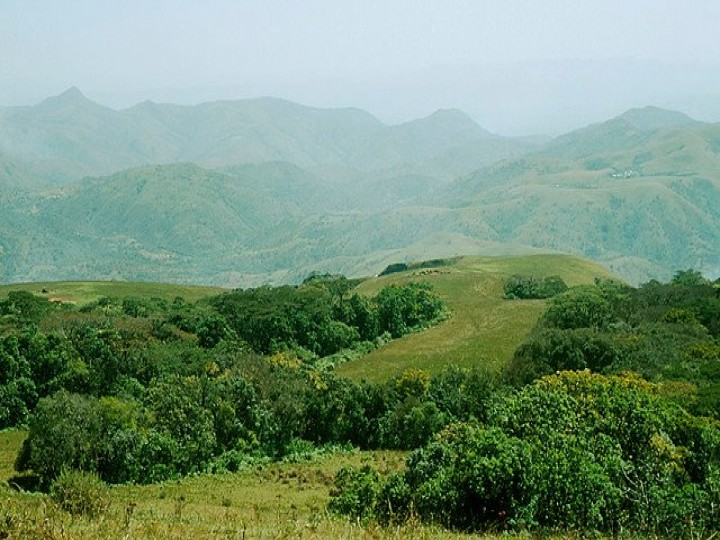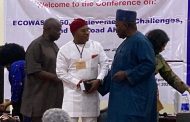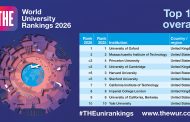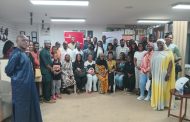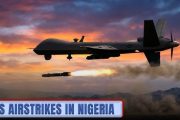By Adagbo ONOJA
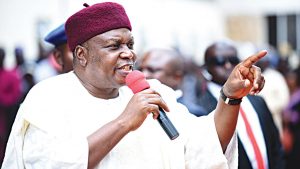
Taraba State Governor, Darius Ishaku: Was violence imposed on him? He is otherwise one of the most politically prepared Middle Belter for power in recent years in terms of intellectual, cosmopolitan and professional grooming.
Apart from the military and police authorities, the state governor and his media squad and the Minister for Women Affairs, Aisha Alhassan, who hails from the state, it is still silence on all fronts on the violent week in Mambilla Plateau, Taraba State of Nigeria. The politicians, traditional rulers and religious leaders are yet to speak. It is not clear if this is strategic silence in aid of de-escalation or a sign of total disarray among the northern elite. Most people observing the drama would consider it to be still too risky to say anything as whatever one says could be used against him or her. All that an opponent needs to do is to wonder where so, so and so was when somewhere else was boiling! In other words, the sort of violence raging in Mambilla now has become so common in northern Nigeria that anybody can argue in any direction about the who, why and how of it.
If northern Nigeria were a republic, it would have been a perfect case of nation states international peace practitioners describe as “seriously underdeveloped, unable to exercise effective governmental authority and are at increased risk of violent upheaval” due to the estimated loss of lives index from inter-group violence since 1981. By 2002, the late Bala Usman had counted 34 communal conflicts in the period 1980 – 2002, all of which he claimed had been deliberately organised and carried out within what he called the Central Nigeria Uplands and Middle Benue Basin. In 2006, University of Jos Sociologist, Professor Ogoh Alubo updated Bala Usman in a book titled Nigeria: Ethnic Conflicts and Citizenship in the Central Region. His records showed twenty-six major eruptions between settlers and indigenes alone between 1980 and 1998. These conflicts aggregated the underlining ethnic differences (Hausa/Fulani versus one or the other out of the cluster of ethnic groups in central Nigeria), religious differences (Christian-Muslim dichotomy), majority/minority divide and settler/indigene dichotomy.
All in all, we are talking about a legacy of inter-group violence unique to northern Nigeria, be it the Maitatsine Riot of 1980; the 1982 Fagge – Kano Crisis; 1987 Zangon-Kataf crisis in Kaduna State; the series of Tiv-Jukun conflict in Wukari LGA of Taraba State since 1990; the 1992 Mangu-Bokkos conflicts on the Jos Plateau; 1995 Tafawa Balewa crisis in Bauchi State; the 1995 ethnic disturbances at Sabon-Gari Market in Kano; the Shiite attacks of 1996 and 1997 in Katsina State; the Reinhard Bonke Riot of 1991 and the Akaluka Incident of 1994; the series of ethno-religious clashes between the “Jasawa” and “Jankassa” in Jos North LG of Plateau State preceding the return to civilian rule in 1999, climaxing in the September 2001, June 2004, November 2009 and January 2010; the 2000 Sharia Riots in Kaduna State and the 2002 Miss World Beauty Pageant violence also in Kaduna State. there was the Danish cartoon violence in Maiduguri in 2005, the same year the ‘Talibans’ started occupation of Yobe State from where they migrated to Borno when the military cleared them off in 2006.

A map of larger Nigeria showing the north’s geography of violence in recent years if taken from Benue upwards but minus Sokoto
The geo-political distribution of violence from this listing which is by no means exhaustive shows that no section of the region has been spared the agony of violent conflicts although Sokoto and Katsina have only one incidence each, all intra rather than inter-religious. The worst theatres have been Kano, Jos, Kaduna and Borno before the recent trend which concentrated on central Nigeria as manifested in Agatu, Southern Kaduna and now the Mambilla Plateau area.
A million reasons are given but there is no consensus on any. That is to say that there is no agreement on whether the problem is fundamentally stemming from elite manipulation of differences or poor governance or incompetent security agencies or Fulani militia or even the argued African catastrophe in terms of uncontrollable urge for violence and finally, the recent expression, corruption fighting back. Anyone of these one takes has its believers and non-believers. The way out would have been to organise to understand each other and produce consensus. But how can this be when things have really been falling apart everywhere?
At the risk of monotony, the question is still whether this is a case of conflict management failure or a northern Nigeria conundrum? If northern Nigeria has almost been nothing else than a battle ground for the last 36 years, then this is an apt framing of the poser confronting it. However, it is answered, the risk is real that this legacy of bloodletting has all the prospects of reproducing itself into an all-consuming affair from which there might be no escape for anyone. This is commonsensical because violence begets violence, more so in the context of the current level of inter-group suspicion, hatred and siege mentality. It is worsened by the reductionist approach to conflict management in which nothing more than acrimonious blame game and mediocre claims and counter-claims are all that are taking place. For most of the time, the attention is on who is blameable rather than what is wrong. In the end, the real problem is left unattended and it is only a matter of time before violence erupts somewhere else. In that context, it makes sense to worry about where next after Mambilla?
But the temptation to give up hope should be as strong as the optimism for miraculous release from this cycle of bloodletting. It is very easy to turn it all around with leadership instead of the power approach that is being used by all those concerned today. There is still no alternative to confronting the national question at the national and northern levels with a charismatic, knowledgeable and acceptable leader who can galvanise and give reality to the purpose of politics. No institutionalism or technological development will diminish the place of leadership or the human agency in politics very soon. Societies such as northern Nigeria desperately in need of peace, security and stability must, therefore, pay particular attention to leadership qualities. It has no choice because, in the digital age, all practitioners and propagandists of insularity, whether they are Christians or Muslims, are doing what they do not know the implications. And they need deliverance, in both the theological and political sense.


So, who will end this outdated ethno-religious firefight among the northern elite and move the region to political thinking reflecting the digital age? It is not everyone who can do it.
Whether that sort of leadership would emerge and from where before this nonsense explodes into something worse is the real issue. It is, of course, doable because it has been done before when and where people had ruled out reconciliation and taken to the inevitability of war. What is thus at stake is the capacity of a deeply divided north to, as a matter of deliberate decision, search and fish out its own current versions of the Mandelas, the Gowons, the Paul Kagames, the Barack Obamas of this world in terms of guarantee of the developmental state on the one hand and fairness, inclusivity and social justice on the other hand. That offers the best approach to conflict management in the present context. The logic of the emphasis on leadership is its recognition that there are deep seated problems on the ground and that only certain typology of leadership can respond to them now. Who the cap fits is the question now.

